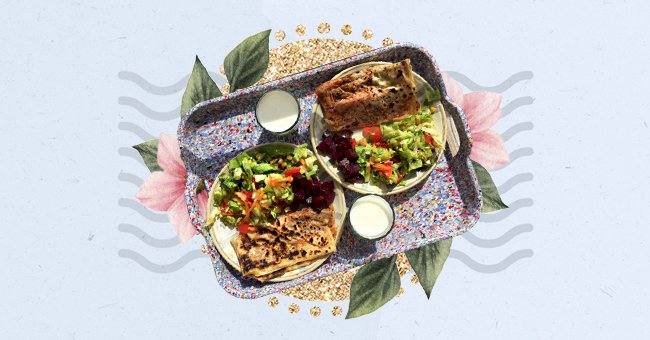
Our Pick: Top 10 North African Dishes To Try
It may be due to the increasing number of ethnic restaurants in our cities, due to the effect of globalization, or the curiosity of many cooking enthusiasts. Still, the typical dishes of the African tradition are, in fact, taking hold of significant cities globally. And with good reason!
The variety of flavors that the African continent offers makes the cuisine unique and different from the taste we are used to. Yet, it maintains points of contact that allow everyone to appreciate it.
North African cuisines are the product of a whole series of historical, cultural, and topographical factors. The ancient trade routes, connections with Europe, and the arid climate have influenced all tastes from Algeria and Morocco in the west to Egypt in the east. North African cuisine is full of colorful spice blends.
1. Couscous
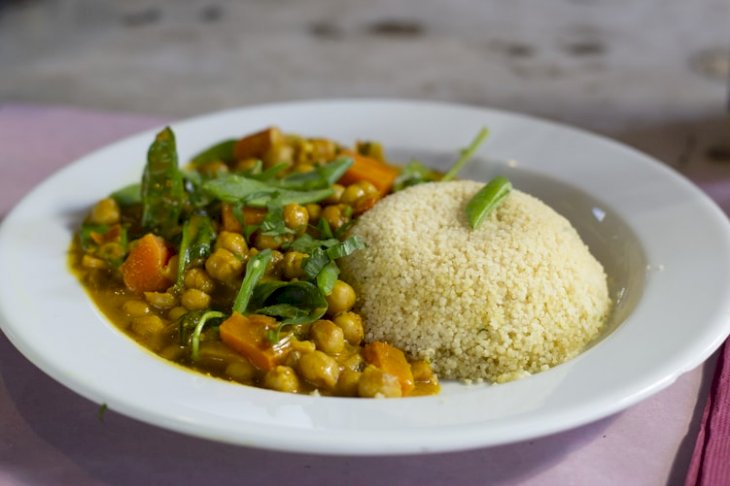
Photo by Daniela on Unsplash
This is the staple food of North Africa, made of steamed semolina that can be served as an accompaniment to tajine, vegetable dishes, or eating it alone.
There are many regional variations on couscous - you can add harissa sauce; serve it with almonds, sugar, and cinnamon for a dessert; or add lamb, chicken, and meatballs with a touch of saffron to form the couscous royale.
2. B'Stilla
B'stilla, also known as pastilla, is a Moroccan dish. It originates from Fez and dates back to the eighth century. The meal generally consists of a sweet and sour pigeon pie but can also be made with chicken or quail.
Typically served as an appetizer on big occasions, b'stilla is filled with pigeon meat, onions, and spices like saffron and coriander, before adding almonds and beaten eggs. It is all wrapped in thin warqa dough, which becomes very crunchy when cooked.
3. Tagine
The tagine is perhaps the most famous dish from Berber. It gets its name from the earthenware pot in which it is cooked. The tagine has a conical lid so that juices and water are not lost during cooking. This is an essential consideration in desert areas where water sources are so few.
The dish is a slow-cooked stew and can be made up of all kinds of ingredients: chicken, lamb, beef, fish or vegetables, stewed with spices and dried fruit, and served with couscous and bread.
4. Ful Medames Or Foul Mudammas
Ful medames is Egypt's national dish and typical street food in cities such as Cairo and Giza. You'll also find it throughout much of North Africa and the Middle East.
Ful medames is a dish of broad beans cooked in a pot and served with vegetable oil and cumin, garlic, onions, peppers, and hard-boiled eggs. There is evidence that as early as the 4th century, it was offered on the streets of Cairo.
5. L'Hamd Marakad
L'Hamd marakad, the pickled lemon, is an essential ingredient in Moroccan cuisine, served as part of tajine and couscous recipes, as one of the main ingredients in salads and vegetables as a means of flavoring chicken dishes.
It would be best to make it with citron beldi, the traditional Moroccan lemons of the doqq or boussera varieties. Quarter the lemons and preserve them in water, lemon juice, and salt, and left to ferment and soften for 4-5 weeks. Subsequently, the peels, in particular, are appreciated for their intense flavor.
6. M'hanncha

GettyImages
M'hanncha is also known as the "Moroccan snake" or "snake cake." It is a dessert made up of a whirlwind of rolled puff pastry, hence the name.
You roll out the dough to form a long tube filled with almond paste and flavored with orange blossom and pistachio water; cinnamon is sprinkled on the cooked wire.
7. Harira
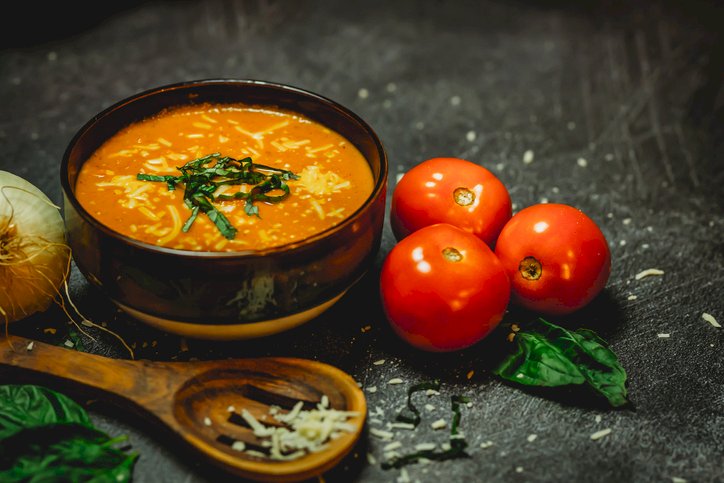
GettyImages
Harira is a soup that is served in Algeria and Morocco. It is always consumed during the holy month of Ramadan when the fast is broken at sunset. Or it can be consumed throughout the year as a snack or aperitif.
There is no specific recipe for making harira. You can make it with pieces of lamb, chicken, or beef, although it is usually mixed with lentils, chickpeas, and tomatoes. Extra spices such as ginger, cinnamon, and turmeric are often added, with a hint of lemon juice. Harira is served with chebakia, a traditional Moroccan sesame cookie.
8. Matbucha
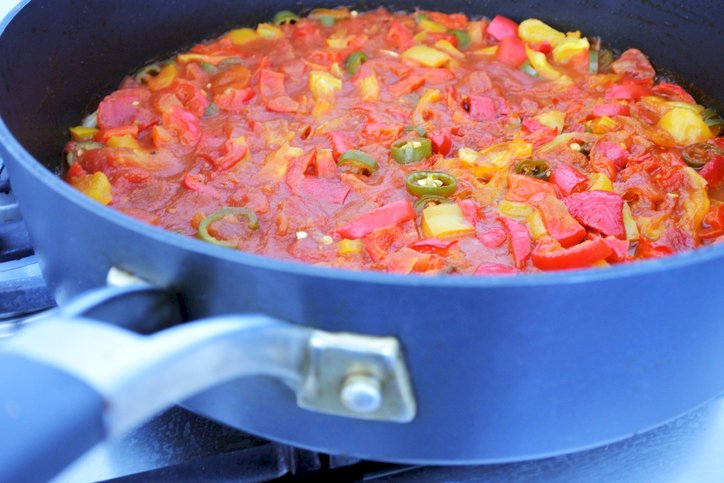
GettyImages
Matbucha is another North African dish popular in Israel and Syria. You can serve it as an appetizer with bread and olives and consists of a thick sauce made with tomatoes, peppers, garlic, and chili, cooked together to form an oily paste ideal for dipping or serving on buns.
The importance of tomatoes in matbucha means that the dish cannot date back beyond the early 19th century. Tomatoes were introduced to North Africa by the British consul in Aleppo, John Barker.
9. Mhadjeb
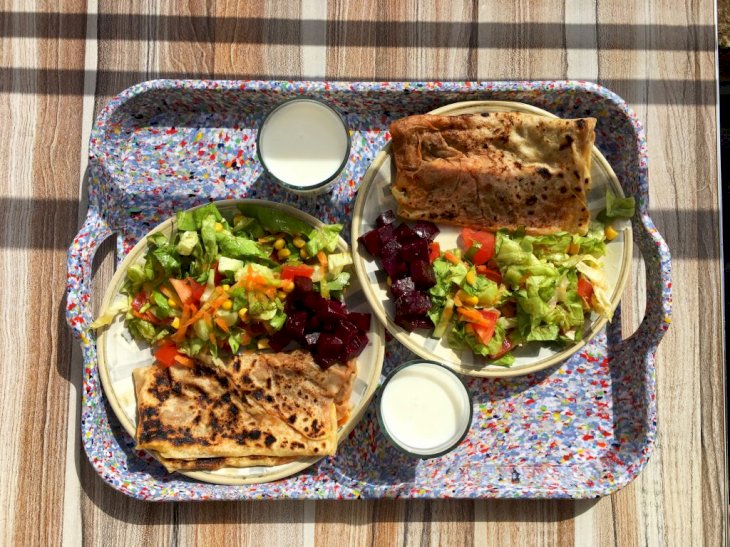
GettyImages
Mhadjeb, or mahjouba, is a staple of Algerian cuisine and typical street food in Algiers and Oran. Sometimes you will find it in recipe books as Algerian crêpes.
Mhadjeb is a crepe filled with a paste of tomatoes and chopped vegetables such as carrots, onions, and chilies that have been simmered. A street vendor will place a flat piece of pasta on the pan, add the pasta, and fold the dough into a square for cooking.
10. Mechoui
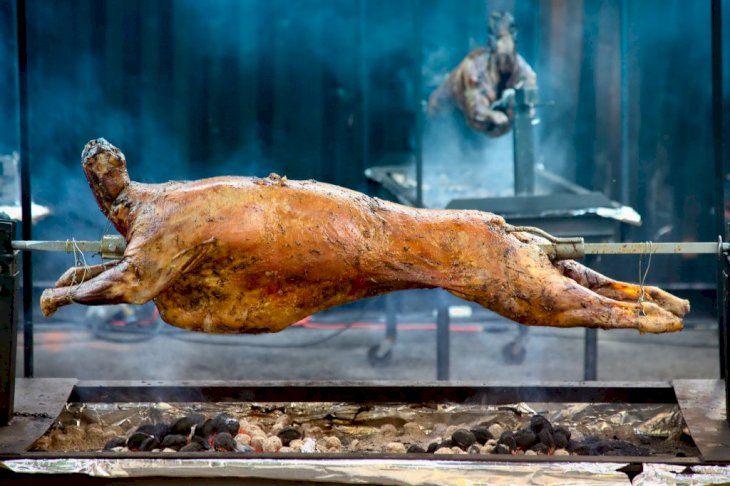
GettyImages
Mechoui is the traditional North African roast - a whole lamb roasted on a spit or in a pit dug in the ground. The meat is served with focaccia and sauces and yogurt.
Meat from the head, such as cheeks and eyes, and offal is considered a delicacy and is distributed to guests attending the meal. You can replicate mechoui at home with just a shoulder of lamb roasted with spices like cumin, coriander, and thyme.